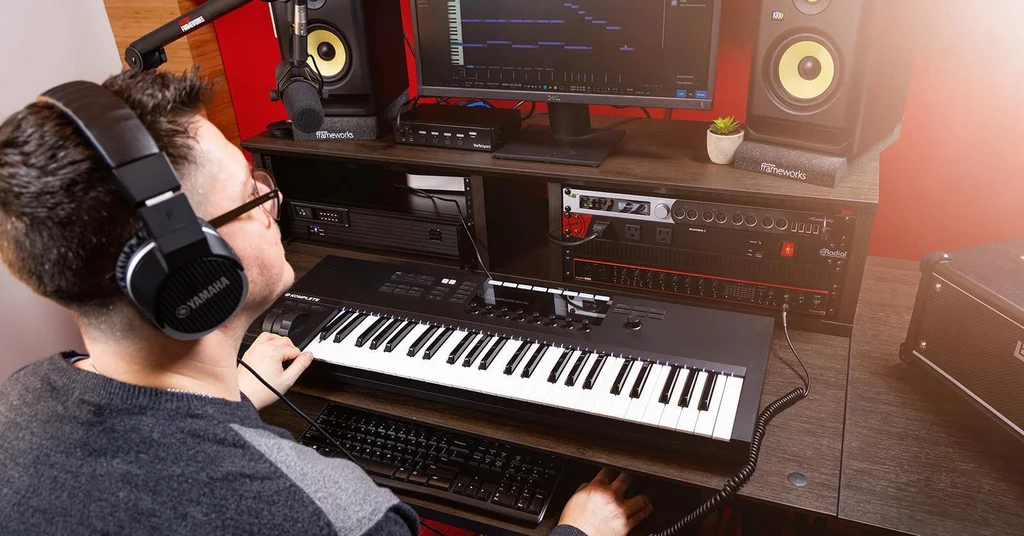MIDI FX are the secret weapons of modern music producers. While basic MIDI editing is standard fare, advanced MIDI FX techniques can transform your workflow, inspire creativity, and breathe life into your tracks. Whether you’re working in Ableton Live, Logic Pro, FL Studio, or another DAW, mastering MIDI FX is essential for any producer aiming for a professional edge.
In this comprehensive guide, we’ll dive deep into advanced MIDI FX techniques used by top producers. You’ll discover creative ways to manipulate MIDI data, automate complex patterns, and use MIDI FX chains to unlock new sonic possibilities. We’ll also include practical examples, recommended plugins, workflow tips, and curated video tutorials to help you step up your game.
Why MIDI FX Matter for Pro Producers
MIDI FX are more than just convenience tools—they’re creative catalysts. Here’s why pro producers rely on them:
- Speed Up Workflow: Automate repetitive tasks and complex patterns.
- Inspire Creativity: Generate ideas you wouldn’t play manually.
- Enhance Performance: Add dynamic, evolving elements to live or studio sessions.
- Unlock Complexity: Create intricate harmonies, rhythms, and textures with minimal effort.
Essential MIDI FX Plugins and Tools
Before diving into techniques, let’s review some must-have MIDI FX plugins and built-in tools in popular DAWs.
| DAW | Notable MIDI FX |
|---|---|
| Ableton Live | Arpeggiator, Chord, Random, Scale, Velocity, MIDI Racks |
| Logic Pro | Arpeggiator, Chord Trigger, Modifier, Scripter, Transposer |
| FL Studio | Arpeggiator, Chord, Note Repeat, MIDI Out, MIDI Scripts |
| Cubase | MIDI Inserts (Arpache, Chorder, Transformer, StepDesigner) |
Third-Party MIDI FX Plugins:
- Cthulhu by Xfer Records (Chord generator & arpeggiator)
- Scaler 2 by Plugin Boutique (Chord detection, progression & performance)
- HY-Plugins HY-SEQ16x3 (Advanced MIDI sequencer)
- Output Arcade (MIDI pattern manipulation)
- MIDI Shaper by Cableguys (LFO modulation for MIDI CC)
Advanced MIDI FX Techniques
MIDI Arpeggiators Beyond Basics :
Arpeggiators are often used for simple up/down patterns, but advanced usage can yield complex, evolving sequences.
- Polyrhythmic Arps: Layer multiple arpeggiators with different step lengths for cross-rhythms.
- Velocity and Gate Automation: Modulate velocity/gate for dynamic expression.
- Step Sequencer Integration: Combine arpeggiators with step sequencers for hybrid patterns.
Example: In Ableton Live, stack two Arpeggiator devices with different rates and set random velocity ranges for each.
MIDI Chord Generators and Harmonizers :
Chord generators can instantly add harmonic richness.
- Custom Chord Sets: Program unique chord shapes for genre-specific voicings.
- Dynamic Chord Progressions: Automate chord changes for evolving harmonies.
- MIDI Harmonization: Use MIDI FX to harmonize melodies in real time.
Example: Logic Pro’s Chord Trigger can be mapped to pads or keys for live performance.
MIDI Randomization and Humanization :
Perfect MIDI can sound robotic. Advanced randomization techniques add life.
- Velocity Randomization: Vary note velocities within a range for realism.
- Timing Shifts: Randomly nudge note positions for human feel.
- Note Length Variation: Randomize note durations for organic rhythms.
Example: In Ableton, use the Random MIDI FX to subtly shift note values, then follow with the Velocity device for dynamic range.
MIDI Note Repeats and Stutters :
Note repeats and stutter effects are staples in modern genres.
- Live Note Repeat: Trigger rapid-fire notes for trap hi-hats or glitch effects.
- Stutter Automation: Modulate repeat rates for evolving fills.
- MIDI Gate FX: Use gates to chop incoming MIDI for rhythmic effects.
Example: FL Studio’s Note Repeat tool can be automated for complex trap patterns.
MIDI Scale and Quantization Tricks :
Stay in key and experiment with exotic scales.
- Scale Locking: Force all MIDI notes to a specific scale or mode.
- Microtonal Quantization: Explore non-standard tunings.
- Real-Time Transposition: Shift melodies or chords on the fly.
Example: Ableton’s Scale MIDI FX can be set to custom scales for unique melodic ideas.
MIDI FX Chains and Routing :
Combining MIDI FX in creative chains unlocks exponential possibilities.
- Parallel Processing: Split MIDI to multiple FX chains for layered results.
- Conditional Routing: Use MIDI filters to direct notes to different instruments or FX based on velocity, pitch, or channel.
- MIDI Loopback: Route MIDI output back into your DAW for generative patterns.
Example: In Logic Pro, chain Arpeggiator > Chord Trigger > Modifier for evolving, harmonized sequences.
Creative Workflow Tips
- Save Presets: Build a library of MIDI FX chains for quick inspiration.
- Automate FX Parameters: Use DAW automation to morph MIDI FX settings over time.
- MIDI Capture: Record the output of your MIDI FX for further editing.
- Experiment with Unusual Orders: Sometimes, placing a randomizer before a chord generator yields unexpected results.
Advanced MIDI FX techniques are essential tools for any producer looking to stand out. By mastering arpeggiators, chord generators, randomizers, note repeats, and creative routing, you can inject new life into your music and streamline your workflow. Experiment, combine, and automate these effects to discover your unique sound.
Ready to step up your game? Dive into the tutorials, try new chains, and let your creativity lead the way.



